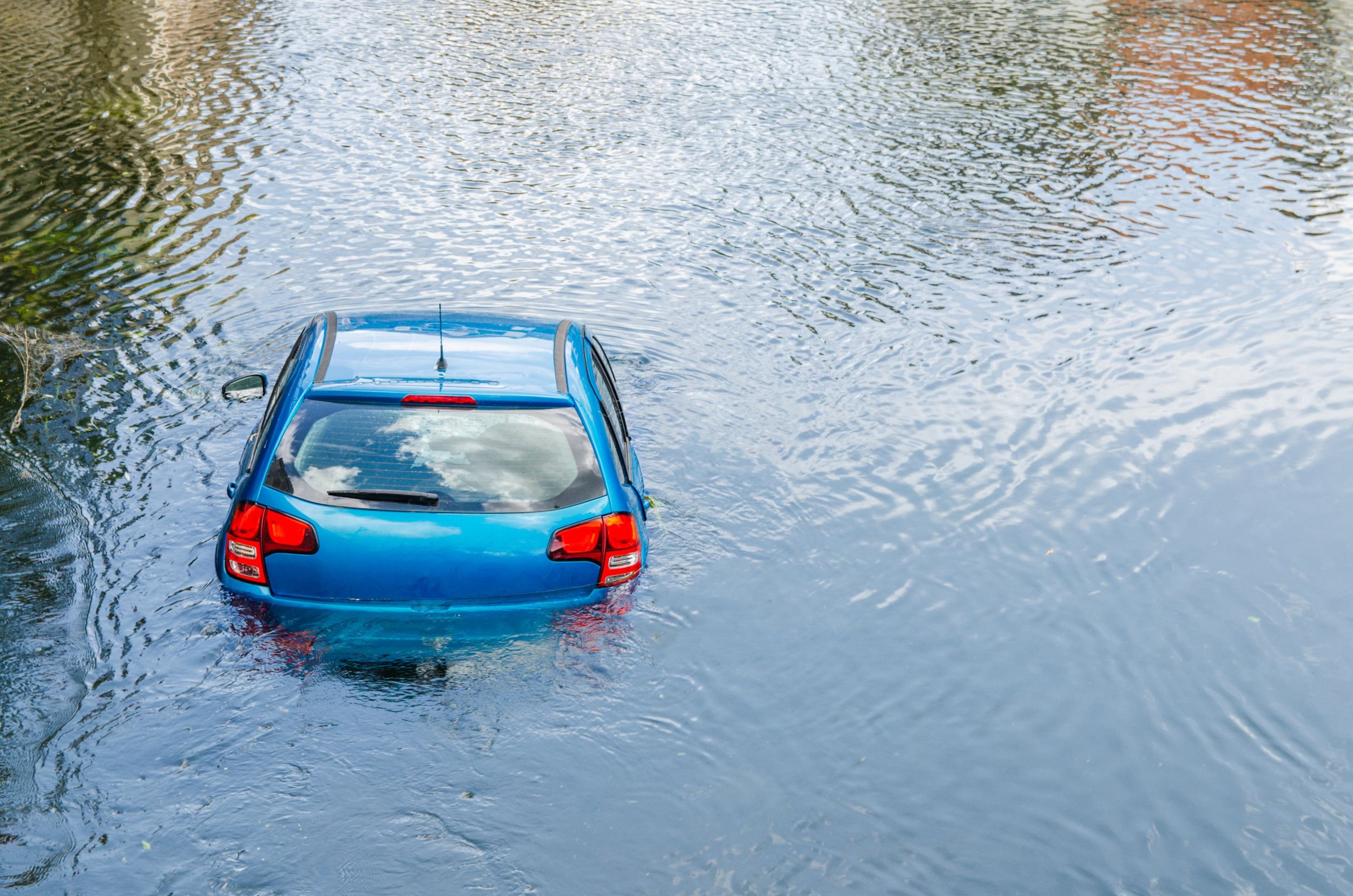Turn Around, Don’t Drown and Other Safety Tips for Driving in the Rain

Written by Megan Sherwood, Oneith Cadiz, M.D., Lyse Deus, M.Ed., and Taylor Rosenbaum, M.D., M.A., InjuryFreeMiami.org
Motor vehicle accidents are a leading cause of death among children and teens. You might not be able to avoid every danger but having a plan for driving in the rain can help keep you and your family safe.
There are a few general tips to handle rainy driving conditions. Before getting behind the wheel, take a moment for a safety check. A good rule of thumb is to think about what will help you see and be seen. Start with checking your windshield wipers by making sure they don’t leave streaks and can clear the windshield with one wipe. Next, think about the lights on your car. Your brake lights, taillights, and headlights should all be working properly. Turning your headlights on while driving helps people see you, especially in heavy rain. Also, the air pressure in your tires should be checked at least once a month and more frequently if it’s cold. Make sure your tires have enough tread. This will help your car grip to the road. One trick is to place a quarter upside down in the tire groove. If you can see above George Washington’s head, it’s time to look for new tires.
Try to plan your route ahead of time. Some roads may flood during heavy rains. You can check the Federal Emergency Management Agency (FEMA) flood zone maps or GPS maps like Google Maps to help you avoid flooded areas. If you see a flooded road, turn around and don’t drive through it.
Whether you’re driving in the rain or not, it’s a good idea to follow general car safety rules. The driver and every passenger should always wear a seatbelt while driving. Make sure children are in the correct car seat and in the correct position in the car. More information about choosing the right car seat can be found at here or by calling 305-243-9080.
In rainy roads, use extra care while driving. Slow down, leave extra space between you and other cars, and don’t use cruise control. Avoid sharp turns and try to stay in the same lane. If your car starts to slide on the road, or hydroplane, don’t slam on the brakes. Stay calm and keep looking and steering in the direction you want to go. Limit distractions and stay focused–that text can wait! Keep your eyes on the road and hands on the wheel. At intersections, look carefully and don’t assume other cars will stop. Watch out for cars, bikes, and people crossing the street.
Finally, if you have new drivers in the family, talk with your teen and share these safety tips for driving in rainy weather. Unfortunately, young drivers have less experience driving and are less likely to wear seatbelts. More than half of teen drivers who died in 2023 were unbuckled. Consider having weather checks with your teen before driving so that you can plan if they’ll need more time to get to their destination, or if it’s better to postpone the trip until the weather improves. When you’re driving with your teen, model safe driving for them. If you notice rainy conditions, you can say your own safety thought process out loud, such as “I’m going to slow down, so I don’t have to brake as hard in these slippery roads.”
Driving in the rain can be challenging, but following these safety tips can help keep you and your family safe. Check your car before you leave, stay alert, and drive slowly.